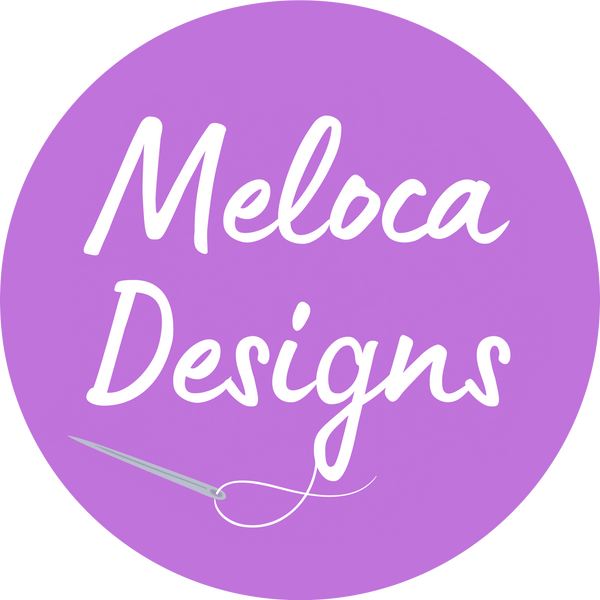Cross stitch has been one of my favourite hobbies since childhood, but as I grew older, I found it difficult to find designs that I really wanted to stitch.
I started playing with making my own cross stitch designs, and eventually started my own business in 2017.
One of my very first cross stitch kits for Meloca Designs was a Custom Character design, which was completely personalised to allow people to stitch a cotton version of themselves and their loved ones.
As you can see from a glance at the Meloca Designs shop, my style evolved into super colourful patterned mandala-style animals, which have become my trademark, but it took a while of experimenting with designs to get there.
I’ve learnt a lot about designing over the years, so if you’ve been thinking about designing your own cross stitch patterns, here are my top tips.
1. Always start your cross stitch design with a sketch
It’s always wise to start with a sketch - even if it’s just a rough one - before diving straight into using any cross stitch design software. It’s much easier to envisage a design and draw it out by hand, whether it’s with pencil and paper or on an iPad.
It’s much harder to keep your creative flow when you are creating the design off the top of your head square by square. But with a sketch, you have something to refer back to.
And if you have invested in cross stitch software like WinStitch or MacStitch, you can actually upload your sketch at your desired size and continue working from it in the software – which is the method I use these days.
2. Don’t start with a huge cross stitch design
As with any creative hobby, starting out with a huge design when you’re a beginner may be too overwhelming, and I don’t want you to give up at the first hurdle!
When I first started creating cross stitch patterns, I began with designs that were around 5-6 inches in size, but didn’t fill the whole canvas, so they didn’t take too long to design or to stitch.
The more fast-paced momentum makes it all so much more fun, and the more cross stitch patterns you design, the more you’ll learn, and the better you’ll get at it.
3. Pick a fun design that you actually want to cross stitch
It’s much easier to follow through with a design that you like and want to cross stitch, rather than creating a design for someone else or because you’re following a trend.
Keep a note of things you like, whether it’s artwork, cross stitch or just a colour palette - you could keep these together on a Pinterest board to refer back to when you need inspiration.
4. Create your first cross stitch design on Microsoft Excel
Before investing in any specialist cross stitch design software, try creating your first design on Microsoft Excel or Google Sheets - this is what I did when I started designing back in 2016.
Simply format the cells to be square at around 0.4cm, then fill the blocks in the colours you need to build your cross stitch design. Try and use colours as close as possible to those you will use when you stitch the design - referring to a DMC colour chart might be handy for this.
I wouldn’t recommend using too many colours with this method, as it could get confusing without symbols to match the colours to.
5. Create a cross stitch design that replicates a cherished photograph
You may want to create a design that replicates a cherished photograph. In which case, you can use a website that converts photos to cross stitch designs, such as Pic2Pat.
You simply upload your image, select your desired floss brand, design size, aida count, colour palette, and PDF format.
On the next page, you'll be shown a number of different versions of your design that have varying amounts of colours - the one that uses the most colour usually looks the best.
Just click the one you want and it will download to the device you’re using - so simple!
This way of converting isn’t 100% as the design can look a bit messy up close. In my opinion, it’s best for converting very large photos, then once you’ve cross stitched it, from afar it should look very similar to your photograph.
It is so fun designing your own cross stitch patterns, once you get the hang of it, and the limits really are endless if you have a big enough imagination.
By creating your own cross stitch designs you truly love, you might even end up starting a business, like I did!
For more cross stitching advice and pattern inspiration, keep reading the Meloca Designs blog.

